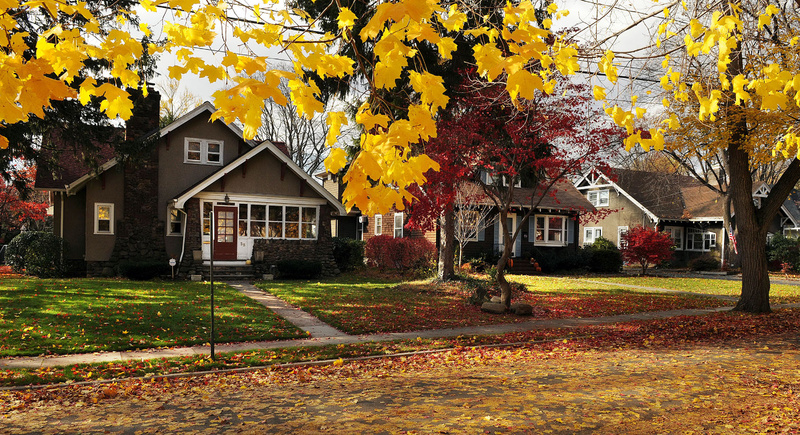HACKENSACK, N.J. – As Kevin Flaherty drove down Bradford Street in Glen Rock, N.J., one day in 1994, he spotted a homeowner sticking a “For Sale” sign in the lawn. He pulled over immediately, and pretty soon, he and his wife, Cathy, were the proud owners of a 1913 bungalow with a handsome front porch overlooking the leafy street.
“I love the look of the house,” Flaherty said. “It’s really quaint.”
Built across America between 1900 and 1930 for middle-class homeowners, bungalows have a warmth and coziness that still hold appeal a century later. These buildings — often only 1½ stories — have a horizontal, close-to-the-ground profile, with overhanging roofs and wide front porches on solid piers.
The bungalow style can be traced back to the Bengal region of India, where bangalas — one-story buildings with thatched roofs — were adapted by the British. The bungalow’s simple style and emphasis on fine workmanship — as well as its use of wood, stone and other natural materials — made it a favorite with the Arts and Crafts movement, which began in Great Britain as a reaction to the Industrial Revolution.
Bungalows spread rapidly in the U.S. after 1900 as more households bought cars and early suburbs sprouted around the nation. The style was popularized in America by Craftsman magazine, published from 1901 to 1916 by designer and furniture maker Gustav Stickley, whose own house, Craftsman Farms in Parsippany, N.J., has been preserved as a museum. Bungalows’ interiors are full of details like fireplaces, window seats, wood trim and pocket doors.
“The original bungalow may have been a reaction to the industrial age and its dehumanization,” said John Brinkmann, founder and publisher of the quarterly American Bungalow magazine, which is based in California. “We have a similar situation going on today, with the electronic age. We yearn to return to something that feels like home.”
Many mail-order house kits, offered by Sears and other companies, featured bungalows, said T. Robins Brown, an architectural historian and co-author of “The Architecture of Bergen County.” “They’re a lot of house for the money,” Brown said.
They’re all about comfort, not ostentation, said Ray Stubblebine of Oradell, N.J., a photojournalist and author of “Stickley’s Craftsman Homes.”
Bungalows can be built with a number of different materials, including stone, wood, brick and even concrete. Because they have a low profile and were constructed with local materials, “they look like they just sort of grew up out of the land,” Brinkmann said. “They’re not a towering, ‘look-at-me’ structure like a Victorian.
“We’re a wealthy country, and people want to show off their wealth,” Brinkmann adds. “But at some point you want to show, ‘I live a quality life, not just an abundant life,’ and a bungalow states that fairly well.”
Brinkmann said it’s common for bungalow owners to love their surroundings almost as much as their houses, because the homes tend to be in well-established neighborhoods, and the front porches offer a lot of opportunities to get to know the neighbors.
A few blocks away, on South Maple Avenue, Laurence and Elissa Goldstein bought a four-bedroom, three-bath Craftsman bungalow in 2004 after they fell in love with its deep porch and carefully maintained period details.
Like many bungalows, it’s bigger than it looks from the outside.
Now they’re selling because their children have moved away and they’re ready to downsize. They’re asking $645,000.
“We would love to find a family that could appreciate its beauty,” Elissa Goldstein said.
It was love before first sight for Emily Pancer and her spacious Glen Rock bungalow.
“I looked at the picture online and said, ‘I need to live in that house,”‘ she said.
A year after buying the home, she still loves its open interiors and big, wraparound porch. Last summer, when rain threatened to ruin a backyard barbecue, they just moved the party to the porch.
“Everything about the house appealed to me, and by some miracle, I get to live here,” she said.
Of course, bungalows also have drawbacks. Closet space can be skimpy, and second-floor bedrooms, tucked in under the slanting roofs, can feel cramped.
The Flahertys put their house on the market a few years ago, and recalled that some prospective buyers took one look at their master bedroom and said, “Our furniture would never fit.”
The most modest bungalows have only two bedrooms, with little living space upstairs. Bob Versheck’s 1922 bungalow in Ridgewood, N.J., for instance, has about 1,000 square feet.
Versheck inherited the house from his late wife, whose grandparents bought it in 1926. He is now selling it, asking $368,000, down from $420,000 a few years ago.
Older homes like his have their challenges, including an underground oil tank that had to be removed, Versheck said. But bungalows also offer rich architectural detail, he notes.
“If you wanted to have beautiful wood French doors installed now, it’s a big deal,” he said. “Then, it was standard practice. There’s a level of workmanship you don’t see in new houses. You stand in this house and you feel there’s a sense of history in it.”
Copy the Story Link
Send questions/comments to the editors.



Success. Please wait for the page to reload. If the page does not reload within 5 seconds, please refresh the page.
Enter your email and password to access comments.
Hi, to comment on stories you must . This profile is in addition to your subscription and website login.
Already have a commenting profile? .
Invalid username/password.
Please check your email to confirm and complete your registration.
Only subscribers are eligible to post comments. Please subscribe or login first for digital access. Here’s why.
Use the form below to reset your password. When you've submitted your account email, we will send an email with a reset code.